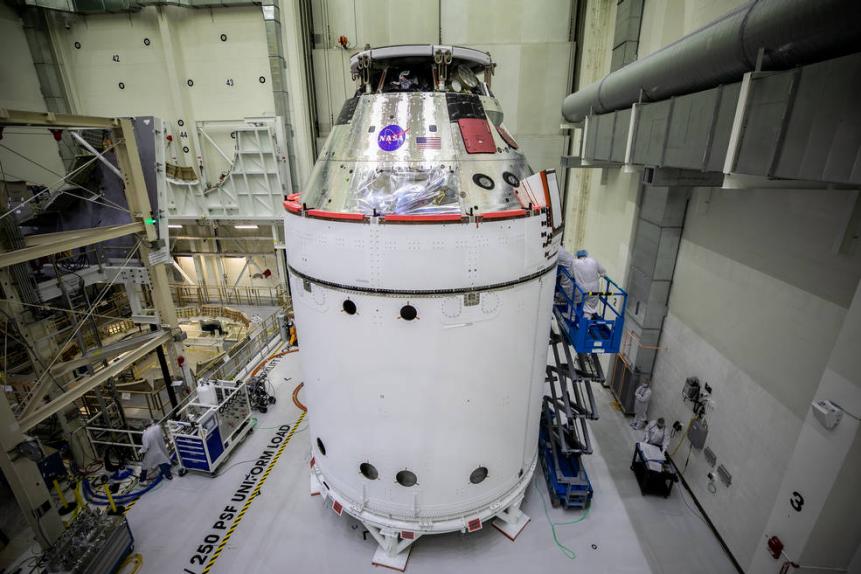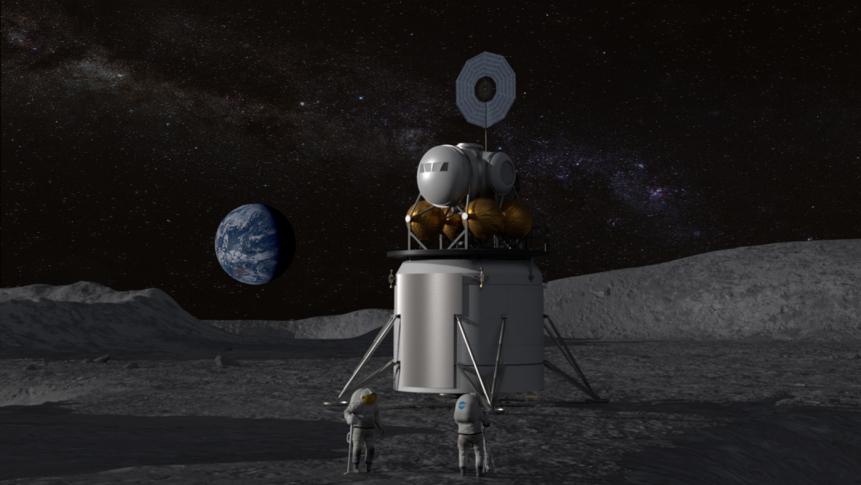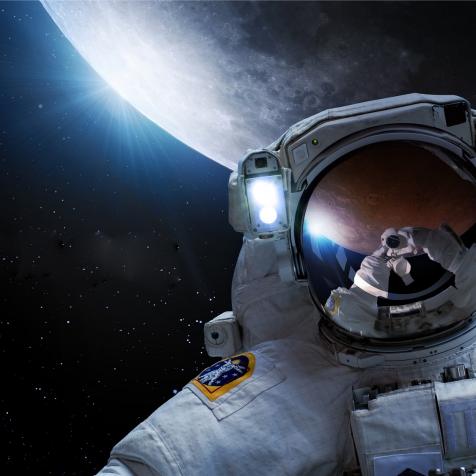
NASA
NASA’s Plan for Returning to the Moon
NASA is planning to land the first woman and next man on the moon in 2024. Through a US government-funded human spaceflight program known as Artemis, there may be human footprints on the south pole region of the lunar surface in the very near future. From understanding the Artemis Program to the Gateway, let’s explore the lunar details.
“Failure is Not an Option” is a phrase credited to the NASA Apollo Missions of the 1960s and 1970s. The meaning of these words has stuck with the agency ever since they were spoken.
The Apollo Mission program, in which the first man walked on the Moon and safely returned to Earth in 1969, retired after the last Moon landing in December 1972. Fast forward to present day, NASA has announced its return to the Moon. The agency will use a spacecraft built in partnership with a privately-owned aerospace company to “land the first woman and next man on the Moon” in 2024. The program’s name is Artemis. This name holds special meaning in Greek mythology as Artemis is the twin sister of Apollo.
In or around April 2021, NASA aims to launch Artemis I, an uncrewed flight test of the Orion spacecraft. Artemis I will travel 280,000 miles from Earth in the direction of the Moon, pass it, and not land on its lunar surface. If all goes to plan, Artemis I will return to Earth after spending the most time in space out of any spacecraft without docking to the ISS.

Getty Images/Andrew Caballero-Reynolds
A space suit is seen during a press conference displaying the next generation of space suits as parts of the Artemis program in Washington, DC.
After the success of Artemis I, and in late 2022 to mid-2023, Artemis II will launch as the first crewed flight of the Orion spacecraft. Orion will circle the Earth twice and possibly fire up its engine allowing for it to be propelled towards the Moon. After orbiting the Moon, Orion will use the Moon’s gravitational pull to slingshot itself back to Earth with the crew for a safe landing.
The year 2024 marks the main event, Artemis III: a second crewed flight aboard the Orion spacecraft. Once in orbit, the spacecraft will dock with the Gateway that is currently being built. The astronauts will then transfer to a human landing system allowing for the first woman and next man to step foot on the Moon’s south pole.
The Orion Spacecraft and Space Launch System
The Orion spacecraft will transport the crew to space and have the ability to sustain them during their mission to the moon. In case of emergency, the spacecraft is able to abort the mission and return the astronauts to Earth. Orion missions will launch from NASA’s modernized spaceport at Kennedy Space Center in Florida atop the agency’s new, powerful heavy-lift rocket, the Space Launch System.

NASA/Ben Smegelsky
The Orion spacecraft for NASA’s Artemis I mission is in view inside the Neil Armstrong Operations and Checkout Building high bay on Oct. 28, 2020, at NASA’s Kennedy Space Center in Florida. The NASA insignia, also called the “meatball,” and the American Flag have been applied to the Orion crew module back shell. Attached below Orion are the crew module adapter and the European Service Module (ESM) with spacecraft adapter jettison fairings installed.
The Artemis Team
On December 9, 2020, NASA announced The Artemis Team consisting of the top nine men and woman astronauts who have been selected to lead the way for missions to the Moon. One of the nine women will be the first to step foot on the lunar surface.
Lunar Landers
A Lunar Lander is a type of spacecraft designed to ferry astronauts to and from the lunar surface. Once the Orion spacecraft nears the Moon and docks with the Gateway in orbit, astronauts will use a human landing system to step foot on the Moon. NASA has selected three companies: Blue Origin, Dynetics, and SpaceX to develop a human landing system for the Artemis Program.

NASA
Artist’s concept of a human landing system and its crew on the lunar surface with Earth near the horizon.
Lunar Gateway
The Lunar Gateway also known as Gateway is currently being built here on Earth. Once in space, it will be used as a lunar outpost to support human and scientific exploration. It is critical for the Artemis Program as the Gateway will provide basic life support for the visiting astronauts once they dock with the Orion spacecraft. In the future, NASA’s current International Space Station partners will work alongside the agency and private companies to enhance the Gateway’s capabilities and use in space.

NASA
Illustration of the Gateway. Built with commercial and international partners, the Gateway is critical to sustainable lunar exploration and will serve as a model for future missions to Mars.



































































